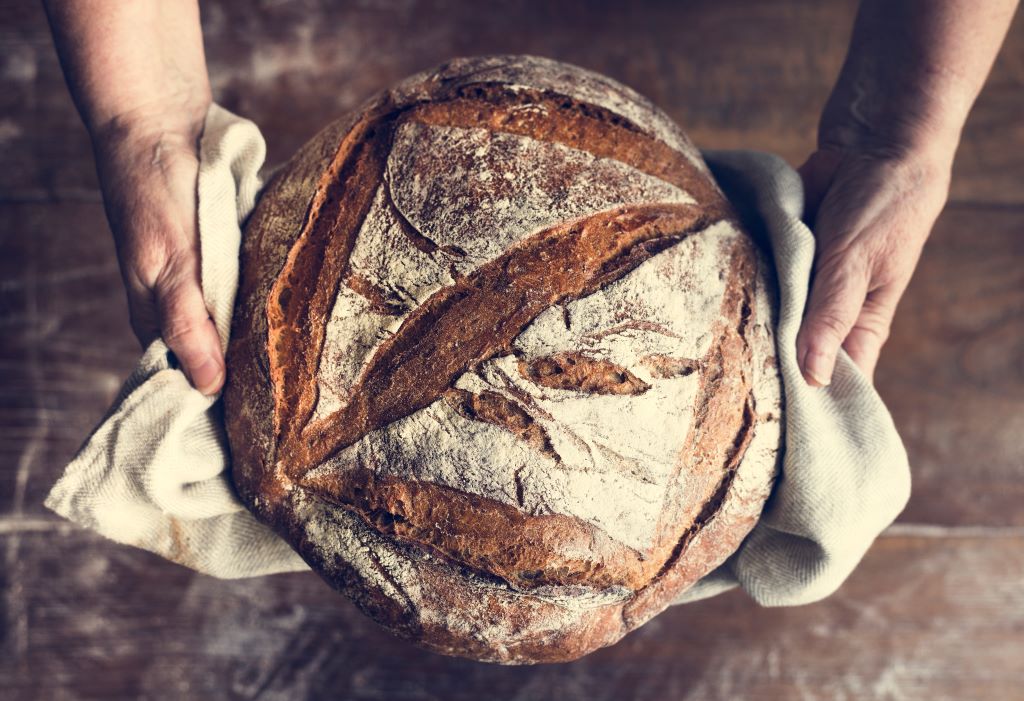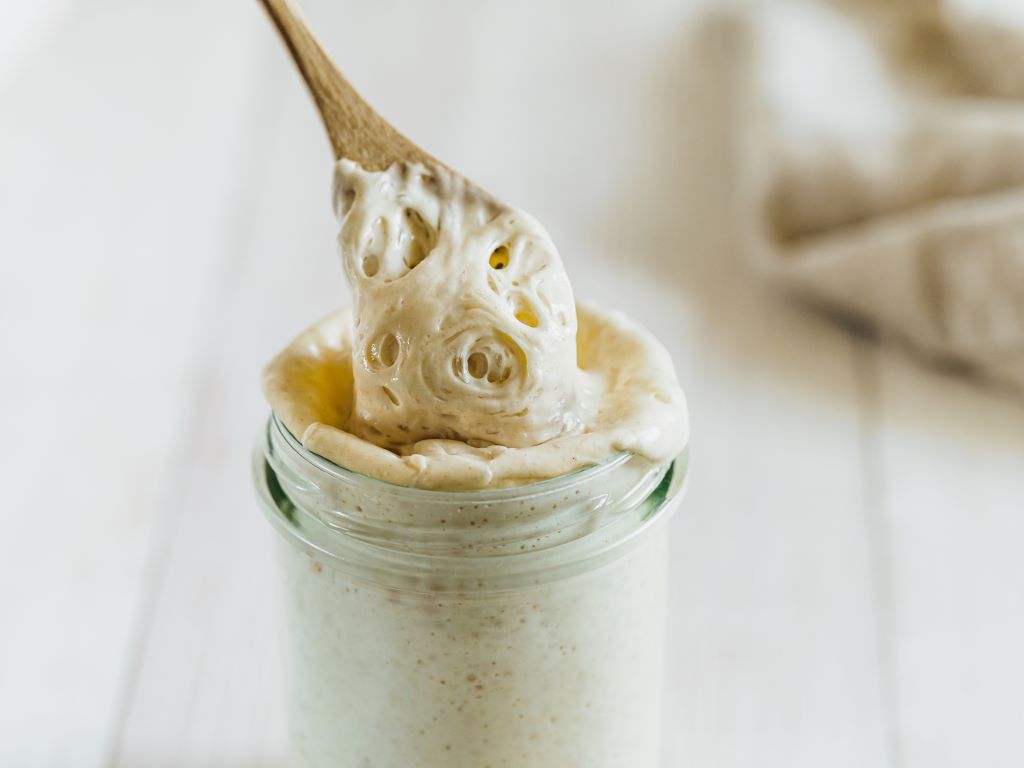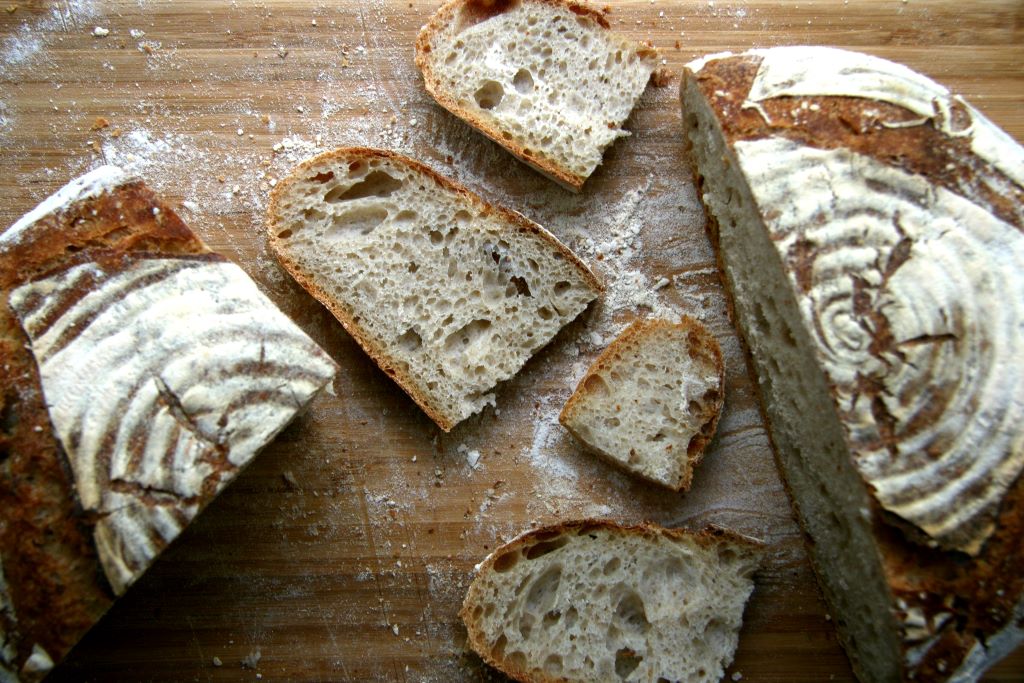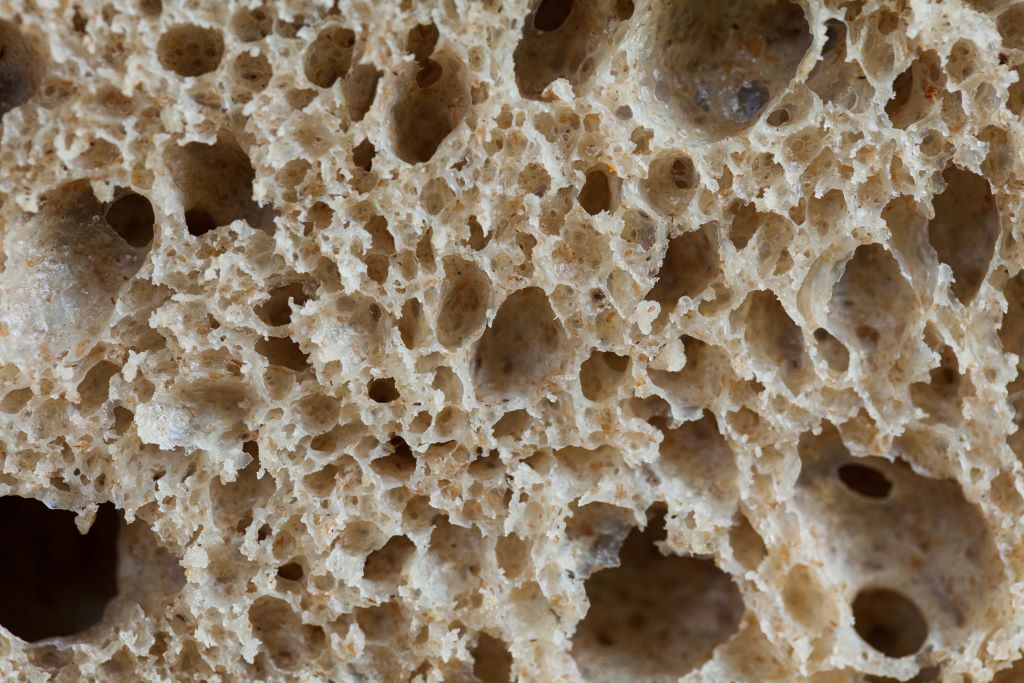
When you think of Sourdough bread, what image comes to your mind? Do you think of a beautifully crafted loaf of bread with the perfect golden-brown color and delicious crust? Perhaps you think of eating hearty clam chowder in a sourdough bread bowl while strolling on Pier 39 in San Francisco. Or maybe you picture yourself sitting down at your favorite restaurant with a warm breadbasket while the delightful smell of sourdough dances around your nose. September is Sourdough Bread month, and in honor of this delicious month, we have easy and cost-effective recipes to create your Sourdough starter and Sourdough bread. Before we share the sourdough recipe, let’s explore the history of this easy and delicious bread.
The History of Sourdough Bread
Sourdough bread is the oldest form of leavened bread. It’s been around since ancient civilizations, where wild yeasts and bacteria were harnessed to ferment dough, unintentionally giving “rise” to this unique leavened bread. Ancient Egypt and Mesopotamia used sourdough as a dietary staple around 4000 BCE, while the Middle Ages saw its pivotal role as a primary leavening agent. The introduction of commercial yeast during the Industrial Revolution led to a decline in sourdough’s popularity, yet it persisted in regions with limited access to commercial yeast.
In recent decades, however, a resurgence of interest in artisanal bread-making has brought back the popularity of sourdough. Its distinct flavor, texture, and traditional fermentation process have captivated both home bakers and professionals, turning sourdough into a symbol of heritage and culinary craftsmanship. Beyond its taste, sourdough embodies a connection to tradition and local food culture, and it remains a beloved and iconic bread with a ton of history.
Now that you’re up to speed on Sourdough bread’s history, let’s jump into the recipe!

Sourdough Starter Recipe
by: Tatiana Lewis
Although the starter is easy, it does require some patience and a little bit of time. Making a proper Sourdough Starter takes seven days but trust us, your patience will pay off.
Supplies
- 1-quart food container: We recommend glass, stainless steel, or food-grade plastic.
Ingredients
To create the starter:
- 1/2 cup whole wheat flour
- 1/4 cup warm water
To feed the starter:
- 1/2 cup unbleached all-purpose flour
- 1/4 cup warm water
Day 1: Make the Starter
Combine 1⁄2 cup of whole wheat flour and 1⁄4 cup of warm water in your large container.
Mix with a fork until smooth; it should be thick and paste-like. Cover with plastic wrap or a lid, and let it rest in a warm area of your kitchen for 24 hours.
Day 2: Check for Bubbles
Check if any tiny bubbles have appeared on the surface.
Bubbles mean fermentation. However, the bubbles might have appeared and dissolved overnight. Don’t worry about it though, as this is pretty standard. Let your starter rest in a warm area of your kitchen for an additional 24 hours.
Day 3: Feed your Starter
Time to start the feeding process.
Throw away half of your starter from the container. After throwing away half of the starter, you should have ¼ cup left. It may seem wasteful, but remember your starter will be fed and continue to grow.
Add 1⁄2 cup of all-purpose flour and 1/4 cup of warm water.
Mix with a fork until smooth. The texture should resemble pancake batter, but you can add more water if needed.
Cover and let rest in a warm spot in your kitchen for 24 hours.

Days: 4, 5, and 6
Repeat the same process as you did on Day 3.
Throw away half of your starter from the container. Again, you should have ¼ cup left.
Add 1⁄2 cup of all-purpose flour and 1/4 cup of warm water.
Mix with a fork until smooth.
Cover and let rest in a warm spot in your kitchen for 24 hours.
Your starter will start to rise at this point, and you can see how much it has grown.
Day 7: The Starter is Done
Your Starter will have doubled in size with lots of fermentation bubbles and the texture will be spongy. Now, you’ll transfer your starter to a clean container. Store it in your fridge and feed it once a week to keep it alive. A homemade starter can last up to two months without being fed.*
As is tradition, you should always name your starter (it is alive, after all).

Sourdough Bread Recipe
by: Tatiana Lewis
Now that your starter is done, it’s time to start baking!
Ingredients
- 1 cup of your homemade sourdough starter
- 1 1/2 cups tepid water
- 2 1/2 teaspoons salt
- 1 teaspoon of instant yeast
- 5 cups All-Purpose Flour
Directions
- Combine all your ingredients in a large bowl. Mix everything to create a cohesive ball of dough. Once combined, empty the contents of the bowl onto a clean work surface and continue to knead the dough for a few minutes until a smooth ball of dough is formed.
- Allow the dough to rise in a lightly greased, covered bowl until it’s doubled in size for an hour and a half.
- After 90 minutes, divide the dough in half. Pre-shape each piece of dough by pulling the edges into the center, turning it over so the seam is on the bottom, and rolling it under your cupped hands to form a ball. Let the dough rest, covered, for 15 minutes.
- Place your two loaves on a lightly greased baking sheet. Cover and let rise for 1 hour.
- Preheat the oven to 425°F after 30 minutes have passed.
- Make two fairly deep diagonal slashes in each loaf. We recommend a serrated bread knife.
- Bake for 25 to 30 minutes, until golden brown. Remove it from the oven and cool on a rack.

Now, Let’s Get Baking!
With your knowledge of a basic starter and sourdough, you can now practice your baking techniques and explore the many wonders of sourdough not just in September, but all year long. Try out this sourdough recipe and let us know in the comments how you like it. Happy baking!
High-interest loans can be expensive and should be used only for short-term financial needs, not long-term solutions. Customers with credit difficulties should seek credit counseling. The opinions expressed above are solely the author’s views and may or may not reflect the opinions and beliefs of the website or its affiliates. Cash Factory USA does not provide financial advice.
Image(s) or Footage (as applicable), used under license from Shutterstock.com.
* This blog contains links to other third-party websites that are not endorsed by, directly affiliated with, or sponsored by Cash Factory USA. Such links are only for the convenience of the reader, user, or browser.